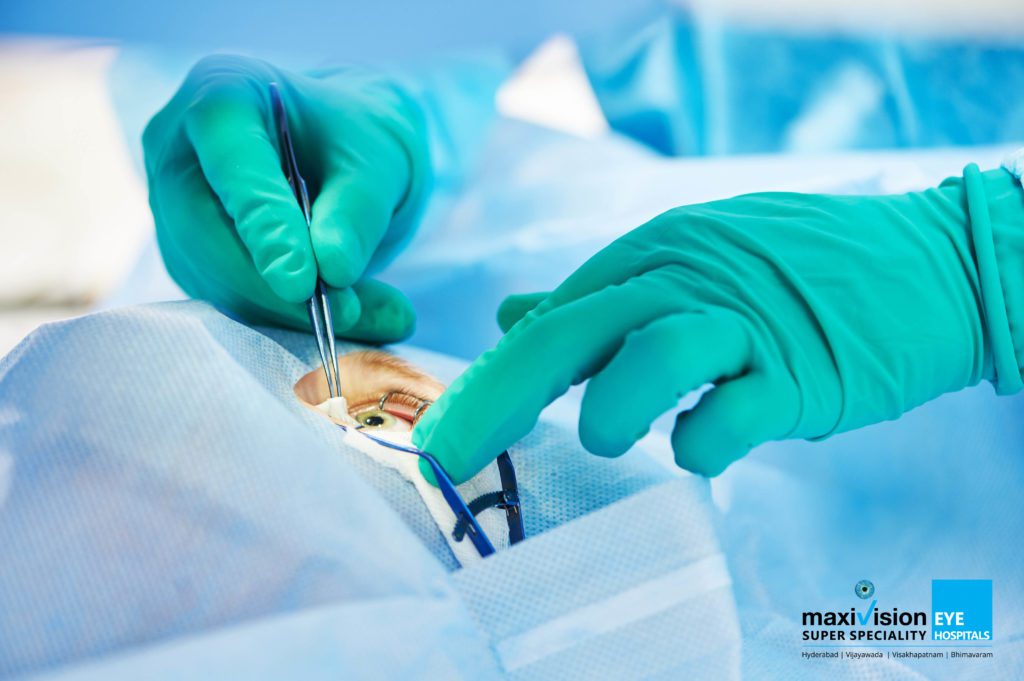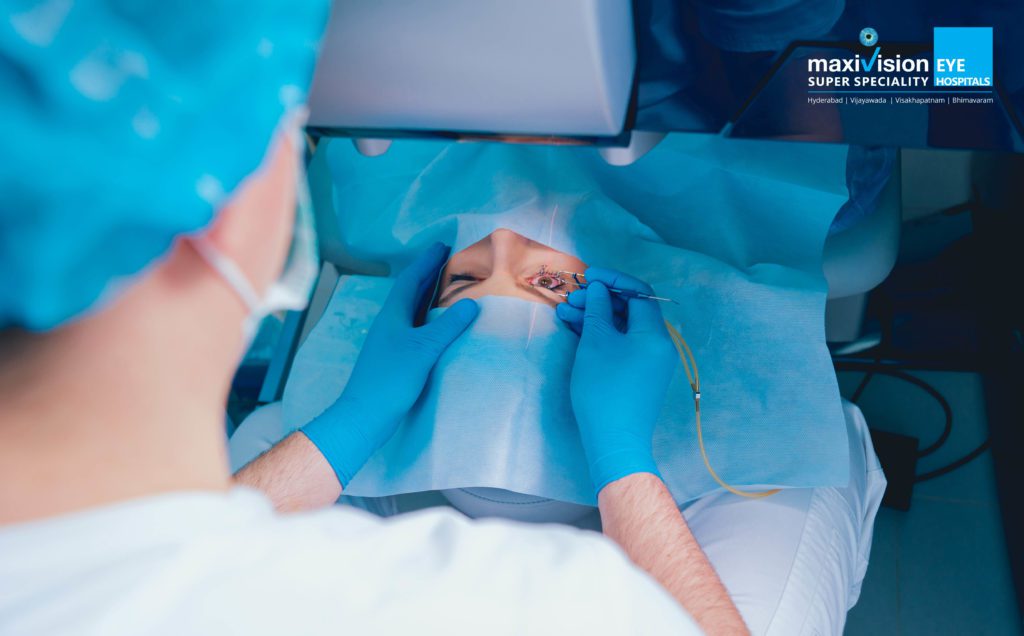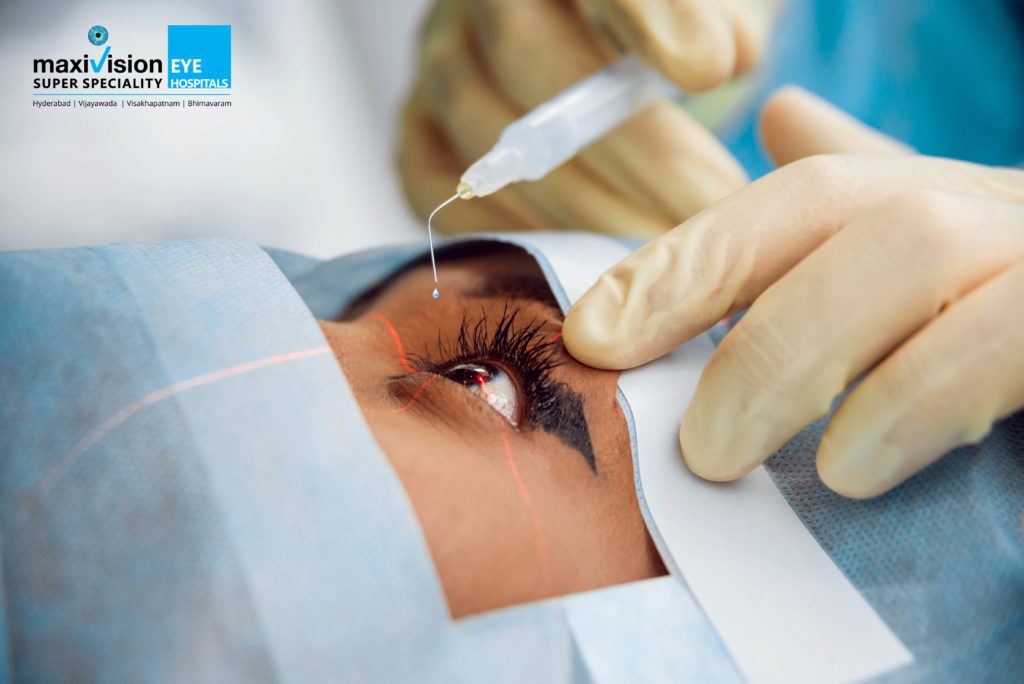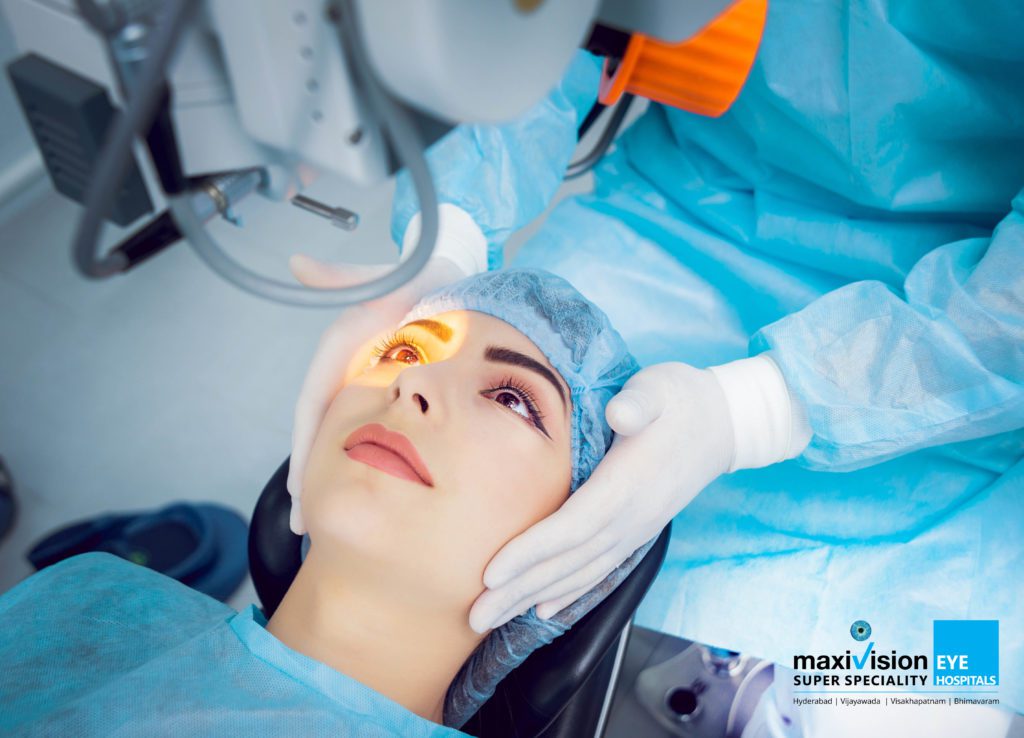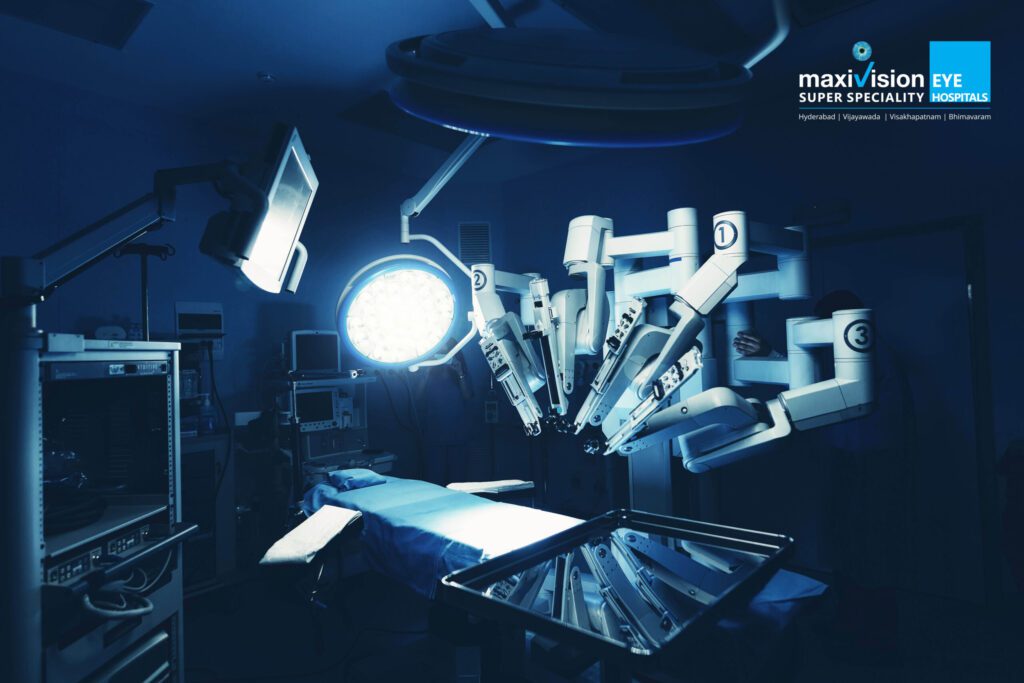
Cataract surgeries are going to be faster and hassle-free. The new Robotic Cataract Surgery technology, which employs laser machines to work on cataract patients, is being acquired by a handful of hospitals. The newest cataract surgery technique replaces manual actions. It is done by a very accurate and precise Femtosecond Laser which makes the surgery blade-free and all-laser Cataract Surgery.
In a Robotic Cataract Surgery, a femtosecond laser machine is docked on to the eye and images of the eye are caught by an imaging system attached to it. The incision of the cornea, the opening of the lens capsule and disintegration of the lens is done robotically. The process, however, takes below five minutes.
The Traditional Cataract Surgery
A cataract is the clouding of the lens inside the eye. It prevents you from enjoying a clear, sharp vision. It can also lead to loss of vision if not cured on time. To bring back a clear vision, a surgeon will have to do the cataract surgery. For this, he cuts the cornea to go into the eye and remove the clouded lens by opening the bag in which it lies. He then substitutes it with an artificial lens inside the eye.
The disability due to cataract can extend from a mild visual blur or glare to profound impairment of vision. Nevertheless, this vision loss is completely reversible. Your doctor will walk you through the treatment options. Your doctor can suggest you either glasses or surgery, which depends on your eye health and vision needs.
Modern cataract surgery requires the surgeon to make a tiny (about 2.2mm) incision in your eye to get rid of the clouded natural lens of the eye. An artificial, customised lens is then set inside the eye to restore your vision. In traditional Cataract Surgery, also called phacoemulsification, all of these steps are carried out physically, except the removal of the lens. It is possible with the help of a PhacoMachine, which employs ultrasonic energy to liquefy the cataractous lens.
Do I Need Cataract Surgery?
How do you know whether you need cataract surgery or not? If cataracts are causing to reduce your quality of life, then the possible symptoms could include:
- Poor night vision
- Vision problems that interfere in daily living
- Colours seem faded
- A halo sometimes appears around lights
- Driving difficulties at night due to glare from headlights
- Frequent changes in prescriptions for eyeglasses or contact lenses
- Double vision
3 decisions you need to make before having cataract surgery
To a larger extent, cataracts are a normal effect of ageing. Cataract formation is more often than not a gradual process that plays out over the years. The lenses of our eyes turn out to be less transparent, less resilient, and often thicker. By age 80, half of us will have cataracts.
Cataracts can creep upon you. It may be tough to clear up the effects of developing cataracts from other age-related vision changes. In the early stages, you may become more shortsighted, a problem that can be corrected with eyeglasses. As the cataract advances, your night vision may get worse and colours may appear duller.
Here are 3 decisions to consider before opting for Cataract Surgery:
Decision 1: When to have cataract surgery?
The doctor will examine the sharpness of your vision by having you recognise a series of symbols or letters on a chart. He or she may also dilate your pupils with drops to check the interior of the eye. With the help of a slit lamp (that lights a small area inside the eye), the doctor can see any cataract. Further examinations and tests help rule out other eye disorders, such as glaucoma or retinal degeneration.
For most people, the question is when to go through the procedure. There’s no rush to have cataract surgery. It isn’t a life-threatening situation. That decision is, however, based on how much the cataract is meddling with your vision and daily life. You may want to postpone cataract surgery till you need better vision. If you have other eye conditions such as age-related macular degeneration, your doctor may advocate cataract surgery sooner because Cataracts make it tricky to examine and manage the other eye problem.
Decision 2: Which cataract surgery procedure to have?
If your doctor identifies that you have cataracts in both eyes, he or she may propose first operating on the eye with the denser cataract. If surgery is successful and your vision improves to a large extent, you may elect to go without surgery on your other eye. However, most people get noteworthy benefits from having a second eye operation as well. It includes improved depth perception as well as one’s ability to drive and read.
People usually go for the second surgery once the first eye has healed. Hence, their vision is stable. If you are particularly far-sighted or nearsighted and require cataract surgery in both eyes, you may want to have the second surgery within a month or so of the first surgery. It is to avoid problems with double vision and depth perception due to the distinction in vision from eye to eye.
Decision 3: When and which type of replacement lens?
For a cataract, removing and replacing the clouded lens is its only effective cure. Experience and technology have perfected the eye lens replacement procedure so that it takes only about 15 minutes to operate.
With the growing number of cataract surgeries, the options for lenses have also grown. The most widely used lenses include the following:
Fixed-focus Monofocal lenses.
These lenses can aid you to see at a distance. Though, you’ll need reading glasses to see up close. On the other hand, some people who get fixed-focus mono-focal lenses have one eye fitted with a lens that provides near vision and the other eye with a lens that provides far vision. This combination is called monovision. If you are taking into account this option, your eye surgeon may recommend that you try out monovision with contact lenses before your cataract surgery. Only to see how well you can adjust to the combination. Monovision is usually not the best option for people who need a crispvision.
Accommodative Monofocal lenses
A newer option, accommodative mono-focal lenses, can shift from near to far vision in response to movements of the ciliary muscles in your eye. It is similar to the natural lens in a younger eye. These lenses offer brilliant distance and middle vision, but they aren’t as reliable for near vision. Eye workouts can help you get used to them, but about half of the people who collect them still, end up needing reading glasses.
Toric lenses
These dedicated mono-focal lenses are for people who have astigmatism. Toric lenses offer focused vision at a single distance and correct your astigmatism, so you might not need distance glasses post-surgery.
Multifocal lenses
Like the bifocal or progressive lenses used in glasses, multifocal lenses have different areas considered for distance, intermediate and near vision. The brain and eyes decipher which part of the lens to use. The main setback of multifocal lenses is they can disfigure bright light, creating more glare and halos at night.
Benefits of the Robotic Cataract Surgery
Here are some of the benefits that one can enjoy if they opt for a Robotic Cataract Surgery:
High Precision
Sharp precision is not possible in all cases while removing Cataracts manually. With the preamble of robotic cataract surgery and computerised laser system, surgical risks like poor quality incisions and a capsular tear running out of control are reduced to a major extent. It promises a considerable degree of accuracy, and it is beyond what a human hand can do.
Perfect Lens Placement & Alignment
The Robotic laser makes a precise central opening on the lens bag. It ensures a stable bag and well-centred artificial lens at the end of the process.
Laser-Assisted Correction
With the help of laser-assisted vision correction, a Robotic laser can rectify cylindrical numbers to some degree with Laser incisions. A process otherwise not possible with manual surgery.
Better Visual Outcome
Robotic cataract surgery provides for the restoration of clear and sharp vision. It also guarantees the removal of cataracts and cloudiness. In contrast to manual cataract surgery by a surgeon, robotic surgery guarantees more efficacy and sharpness. Though, it reduces human invasion and works on calculated incisions.
Faster Recovery
There’s quicker recovery with robotic cataract surgery, and it is an excellent option to consider for patients seeking comfortable and faster recovery.
Why Choose Laser Cataract Surgery at Maxivision Eye Hospitals?
Any surgery involves risks, but the advanced high-precision laser-guided system, Catalys® Precision Laser System by Johnson & Johnson Vision lessens those risks. It is because this computer-aided procedure is so precise. It is, in fact, today’s best solution for Robotic Cataract Surgeries.
During laser cataract surgery, an iFS Advanced Femtosecond Laser replaces or assists the use of a hand-held surgical tool. The use of an advanced laser lessens risks and enhances visual outcomes of cataract surgery. Talk to our eye care professionals about the risks to find out if laser cataract surgery is right for you.
Its better visual results can very well justify the added cost of Blade-less Femto Laser Robotic Cataract Surgery. Most people who get Blade-less Femto Laser Robotic Cataract Surgery are happy with its results.
To book an appointment to consult the best doctors for Robotic Cataract Surgery in Hyderabad.
